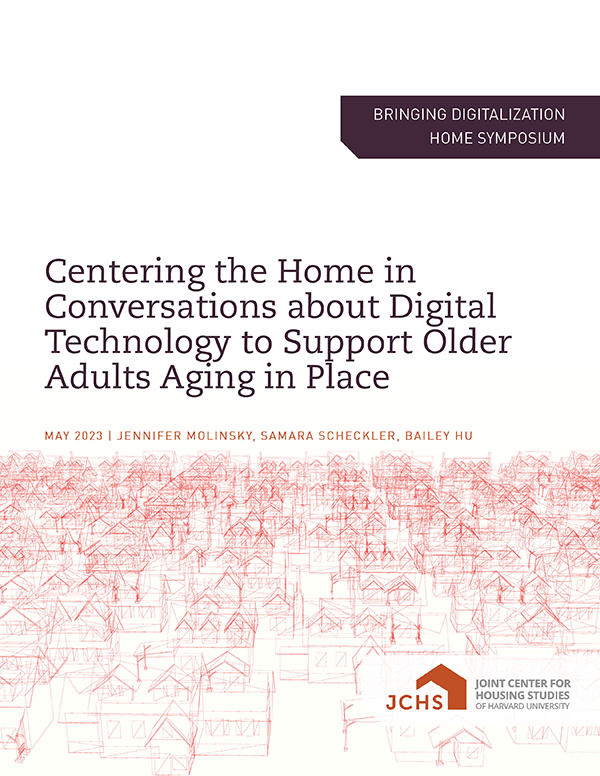Centering the Home in Conversations about Digital Technology to Support Older Adults Aging in Place
As digital technology transforms housing markets, production, finance, and energy efficiency, it also has the potential to reshape the residential experience. Domestic technologies have evolved for generations, and advances in appliances, communications, entertainment, and safety systems have increased convenience, safety, and enjoyment of the home. Today’s smart home technology continues to transform how we use our homes.
For the growing population of the nation’s older adults, digital technologies also have the potential to change the role that the home plays in supporting activities of daily living as well as health maintenance, management, and care, with the potential to enable older adults to remain in their own homes longer as their functional capabilities evolve. These technologies are sometimes described as "ambient assisted living,” which Blackman et al. define as “the use of information and communication technologies (ICT), stand-alone assistive devices, and smart home technologies in a person’s daily living and working environment to enable individuals to stay active longer, remain socially connected, and live independently into old age" (Blackman et al., 2016). We focus in this paper on the subset of ambient assisted living technologies that monitor and provide feedback on health. Many of these technologies are not new, but they are increasingly enabling the communication of health information with caregivers and healthcare providers. Yet while these technologies have the potential to enhance health and independence for those residing in the community, they also raise critical questions about how effective these technologies can be when implemented in housing that is physically inadequate, does not meet accessibility needs, or is unaffordable—conditions that already affect millions of older adults, particularly people of color, those with low incomes, and renters. For digital technology to meet its promise to support older adults at home—including those with limited incomes and unstable housing—housing challenges must be more carefully considered in the healthcare realm. In addition, greater collaboration across the housing and healthcare fields in the development and deployment of digital technology used in home settings can ensure that it truly enhances older adults’ wellbeing.
This paper was presented as part of “Panel 4: How Is Digitalization Transforming How Housing Is Used?” at the symposium Bringing Digitalization Home: How Can Technology Address Housing Challenges?, hosted by the Harvard Joint Center for Housing Studies in March 2022.

